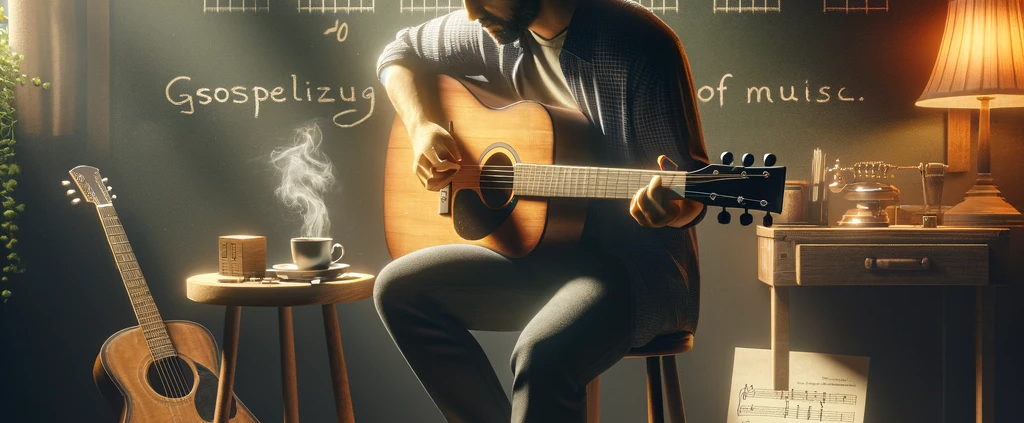Gospelizing Your Progressions – Infusing Blues, Jazz, R&B, and Soul into your progressions
Today, we’re diving into the exciting world of gospel guitar playing by blending elements of blues, jazz, R&B, and soul into your chord progressions. This approach can transform a simple diatonic progression into a rich, soulful experience. Let’s start with a basic progression in C Major – C, F, G, C (I-IV-V-I) – and ‘gospelize’ it with specific examples.
1. Extended Chords
Turn ordinary major and dominant chords into extended chords to add a jazz flavor. Instead of C, F, and G, play Cmaj7, F9, and G13. This simple alteration adds depth and complexity. For instance, a Cmaj7 (C, E, G, B) sounds much richer than a plain C major.
Cmaj7: X32000
F9: 131213
G13: 3X345X
2. Chromaticism
Chromatic passing chords create smooth transitions and unexpected twists. Insert an E7#9 between C and F, and a Db7 (a tritone substitution for G7) between F and G. These chords add a sense of tension and release that’s characteristic of blues and jazz.
E7#9: 076780
Db7: X4342X
3. Blue Notes
Incorporate blue notes in your melodies or solos. Over a C chord, play melodies including Eb, Gb, and Bb. These notes, typical in blues scales, add an emotional, soulful quality to your playing.
4. Dominant Chord Substitutions
Use tritone substitutions for a jazz touch. Replace the G7 with a Db7 before resolving back to C. This substitution creates a sophisticated sound, typical in jazz harmonies.
5. Modal Mixture
Borrow chords from parallel modes for a soulful effect. Swap the F major for an F minor (borrowed from C minor). This minor IV chord in a major key adds a poignant, soulful feel.
F minor: 133111
6. sus2 and sus4 Voicings
Use wide voicings with added 2nds and suspended 4ths. For example, instead of a standard C chord, play E-G-C-D (a Cadd2), for a fuller sound. Another example is playing Gsus4 then G over what was just the G chord, which can add more tension and resolution to regular chord progressions.
Cadd2: X32030
Gsus4: 3X0013
Example Progression
Using the above techniques, a simple C, F, G, C progression can be transformed as follows:
- Cmaj7 (X32000)
- E7#9 (076780)
- F9 (131213)
- F minor (133111)
- Db7 (X4342X)
- G13 (3X345X)
- Gsus4 (3X0013)
- G (320003)
- Cmaj7 (X32000)
By integrating these techniques into your guitar playing, you can achieve a ‘gospelized’ sound that brings together the best of blues, jazz, R&B, and soul. At Guitar Lessons Ithaca, we encourage you to experiment with these ideas and find your unique voice within this rich musical tradition. Remember, gospel music is not just about the chords and techniques; it’s about the emotion and soul you put into every note!
Happy playing, and stay tuned for more insights and lessons from Guitar Lessons Ithaca! 🎸🎶
—
Sign up for a free trial lesson, available both online and in-person. Fill out this form and we’ll get back to you within 24 hours.


